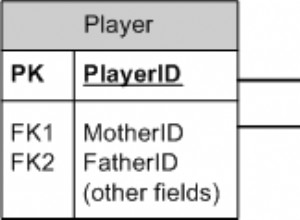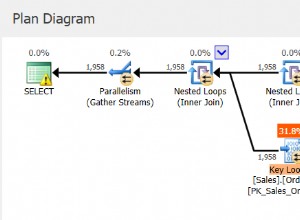DATEDIFF
zlicza przejścia , a nie kropki (np. spójrz na DATEDIFF(year,'20161231','20170101') ). Traktuje również niedzielę jako pierwszy dzień tygodnia. Jak więc kompensujemy te cechy? Po pierwsze, przesuwamy nasze daty, aby poniedziałki były nowymi niedzielami, a po drugie dodajemy 1, aby zrekompensować błąd słupka ogrodzeniowego:
declare @Samples table (
StartAt date not null,
EndAt date not null,
SampleName varchar(93) not null
)
insert into @Samples (StartAt,EndAt,SampleName) values
('20170101','20170131','Question - 6'),
('20170102','20170129','Exactly 4'),
('20170102','20170125','3 and a bit, round to 4'),
('20170101','20170129','4 and 1 day, round to 5')
--DATEDIFF counts *transitions*, and always considers Sunday the first day of the week
--We subtract a day from each date so that we're effectively treating Monday as the first day of the week
--We also add one because DATEDIFF counts transitions but we want periods (FencePost/FencePanel)
select *,
DATEDIFF(WEEK, DATEADD(day,-1,StartAt), DATEADD(day,-1,EndAt)) +1
as NumWeeks
from @Samples
Wyniki:
StartAt EndAt SampleName NumWeeks
---------- ---------- -------------------------- -----------
2017-01-01 2017-01-31 Question - 6 6
2017-01-02 2017-01-29 Exactly 4 4
2017-01-02 2017-01-25 3 and a bit, round to 4 4
2017-01-01 2017-01-29 4 and 1 day, round to 5 5
Jeśli to nie pasuje do tego, czego chcesz, być może możesz adoptować i dostosować moje @Samples tabela, aby pokazać oczekiwane wyniki.




